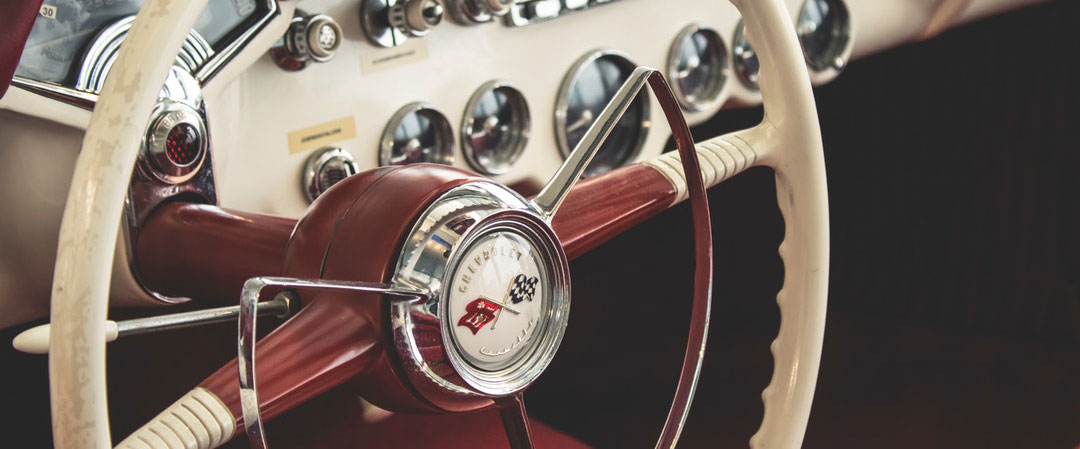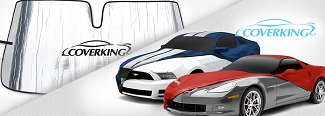Chevy’s Remarkable Machine: A Look at the Top 10 Corvette Models That Defined the Industry

The Top 10 Defining Corvette Models of Chevy’s Remarkable History
See how Corvette models have changed throughout the years in this detailed round-up showing Chevy’s early attempts to their latest masterpieces.
Gimme fuel, gimme fire, gimme Vette’s that I desire. The Chevrolet Corvette is one of the most iconic luxury sports vehicles of all time. Over its 70 years of production, the constant reinvention of the Vette has also made it one of the most desirable and popular sports cars on the market.
Corvette models have changed drastically over the 7 generations of production. Starting as a failing and mis-marketed sports car, then salvaged by a Russian engineer, and ending up as a legendary sports car, the Corvette has had intense ups and downs through the years.
First, we’ll take a look at the history of the Corvette. What makes it so great? Why are certain models so sought after? Then we’ll choose 10 of our favorite Corvette models and tell you a little bit about them. Let’s ride.
History Of The Corvette
The Corvette was conceived after World War 2 when sports car enthusiast GI’s were coming back from Europe excited about Alfa Romeos and Jaguars. The designers and engineers at General Motors knew they had to build something to rival the sports cars of the world.
The two-seat sports car went into the workshop under the name “Project Opel” in 1951. By the 1953 General Motors Motorama convention in New York City, the first prototype of the Corvette was wowing audiences.
Overwhelmed by the response of the public, however, GM rushed the Corvette into production within 6 months of the auto show. Having been compared to and marketed as GM’s answer to British sports cars, the Corvette’s performance failed to live up to the hype. Due to the poor reviews, GM considered shelving production of the Corvette. Because of the following 3 events, that didn’t happen.
The addition of the small block V8 in 1955, Chevrolet’s first since 1919, made the vehicle much more powerful and able to live up to performance expectations. The hiring of Russian engineer Zora Arkus-Duntov, who would later become referred to as “the father of the Corvette”, brought innovation and a racecar driver mentality to Corvette design. He entered the picture as someone who loved the look of the Corvette but thought its innards needed an overhaul.
The third factor in the survival of the Corvette was the entrance of the two-seat Thunderbird. The Thunderbird was marketed as a personal luxury car instead of a sports car, but the nature of automotive production in the ’50s meant that GM couldn’t back down. Yes, a healthy competitive spirit is one of the main factors in GM continuing production of the failing Corvette.
What later resulted is nearly 70 years of high-end sports car production across 7 generations. Constantly revamped and reinvented, the Corvette has had its ups and downs over the years but there’s no doubt that it remains one of the most iconic luxury sports cars in America and the world. Let’s run through ten of our favorite Corvette’s that defined the industry.
’55 V8
In the early days of production, while many people owned Corvettes and liked them, they didn’t consider it a true sports car to be compared to its European counterparts. In 1955, that all changed. Debuting the 265 cubic inch, 195 horsepower V8, proved to be the change that the Vette needed. In addition to the extra power, the exterior color palette was extended to 5 options. Re-marketed and with its guts redesigned, the Corvette was ready for an image overhaul. Duntov was responsible for most of these changes, as his nickname suggests. Matching the image of the Corvette with high-performance parts under the hood allowed Chevy to compete with better-respected sports cars and changed the course of its history.
’57 Fuel Injected
As far as C1’s go, the 1957 fuel injected takes the cake. Building upon Duntov’s innovations in 1955, the following two years of production resulted in the Corvette leaning heavily into its racing roots. The incorporation of the fuel injected engine and the increase of the engine displacement from 265 to 283 cubic inches resulted in further improved performance. Horsepower went up to 290, leading to the Corvette being marketed as the world’s first car to achieve 1:1 ratio of cubic inches to HP. Only a handful of these were made, but Duntov’s love for performance and racing make this Corvette one of our favorites from the first generation.
’63 Stingray Split Window Coupe
Second generation Corvette’s came with a shakeup in design. The Stingray was the result of Chevy’s interest in the independently designed racecar, The Stingray, and Chevy’s own Q-Corvette project. Duntov became interested in a rear-engine layout in the late 1950s. The Stingray was lighter and more aerodynamic than previous models but didn’t sacrifice any of the horsepower. Engineers went with a more futuristic design with a split back window, resulting in what looked like a completely different car when compared to the first generation models.
The ’63 Stingray was a step even further into racing and performance by Duntov. It was smaller, faster, lighter, and handled better. It’s hard to imagine the Corvette without the Stingray shape, and today this is how we picture a classic Vette.
’67-’69 L88
The Corvette L88 is one of the crown jewels of Corvette production. These are the cars that took the Vette from America’s sports car to America’s race car. Only in production from ’67-’69, the L88’s are among the rarest and thus most sought after models in the Corvette collection. Not many of them were produced in 1967, making them extremely valuable at auction. Duntov conceived these with racing in mind, despite a Chevrolet racing ban that lasted into the ’60s. Going at over 500 horsepower, a stock model clocked in at just shy of 11 seconds over a quarter mile. Certain features like air conditioning and radio were unavailable but performance suspension and upgraded brakes were considered standard. It tells you where the folks at GM were going for here, they marketed this one to race teams rather than the public.
’70 Stingray LT-1
The 1970 Stingray of the third generation of Corvettes took on a new design. Curvaceous and stylish, the ’70 Stingray remains one of the icons of the era. The 350 cubic inch, small block V8, was able to do the quarter-mile test in just over 14 seconds. It was the pinnacle of large engine design that disappeared after the oil crisis of 1972 which resulted in the downsizing of engines to provide better fuel economy. Another rare and sought after model, the 1970 Mako Shark design Stingray is hyper desirable and is guaranteed to fetch a pretty penny at auction.
’90 ZR1
After a largely unsuccessful run in the ’70s and ’80s with the C3’s, Corvette returned to form with the sharp, angular design of the fourth generation ZR1’s. Known as the king of American sports cars, the 1990 ZR1 is attributed with saving the Corvette brand. At 375 horsepower, the ZR1 completed the quarter mile test in just 13 seconds and went 0-60 in 4.9 seconds.Because of the depleted value of Corvettes from the ’80s, the ZR1 has become one of the cheapest options for old sports car enthusiasts.
’00-’04 Z06
In 1997, GM unfurled the fifth generation Corvettes to much fanfare. A powerhouse of speed and performance, it was a welcome addition to the family. New V8’s, an aluminium chassis, and a rear-transaxle gave the Corvette improved handling and power. In addition, the sleek design ushered in a new modernistic look for Chevrolet’s racing workhorse. The 405 horsepower engine was good for a 3.9 second 0-60 time and it handled like a dream, making it the perfect car for racing nuts.
’13 ZR1
People pay for speed. The 2013 ZR1 was the fastest Corvette to date at the time and it cost buyers $100,000 for the luxury. Quarter-mile in 11 seconds and 0-60 in a mind-boggling 3.4 seconds, the 638 horsepower Vette was a race enthusiasts dream. Its speed would be topped a couple years later, but this one was memorable.
’17 Grand Sport
The ’17 Corvette C7 Z06 is the fastest of all Corvettes but was plagued with issues throughout its production. Sometimes there is such thing as too fast. Luckily, the ’17 Grand Sport had all of the good bits of the Z06 and combined them with a sleek modern exterior. This was outfitted with carbon fibre panels, upgraded suspension and brakes, and fancy Michelin tires, making it (not too) fast and manoeuvrable at the same time. Probably the best driving Corvette ever.
’19 ZR1
Today’s ZR1 is no slouch either. As Corvettes age, they seem to get better and better…oh and more powerful. The 2019 Corvette ZR1 has a mind-expanding 755 horsepower V8 engine and does over 200 MPH. That’s really, really fast. Since Chevy doesn’t expect to sell more than 3000 of these, they’re all hand built in Bowling Green.
Corvette Models Through the Years
When you peek through the Corvette’s history, you realize that all the different Corvette models are race cars at heart. The history of the Corvette is the history of engineering in the 20th century. It’s hard to narrow it down to just 10 models when every year something new and interesting was being integrated, especially in the early days. That’s not to say, however, that incredible things aren’t still happening. The 2019 Corvette is the fastest street car that Chevrolet has ever built, and we’re excited to see where they can take it from here. We hope the Vette of your dreams made this list. For more articles on Corvettes and other high-performance vehicles, check out our blog and our products page for parts and accessories.







Recent Comments